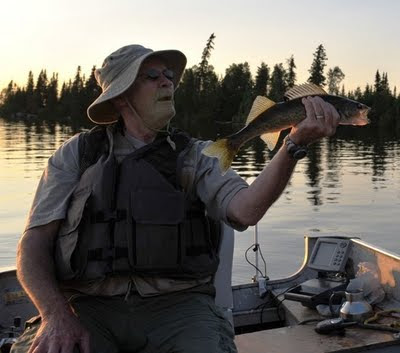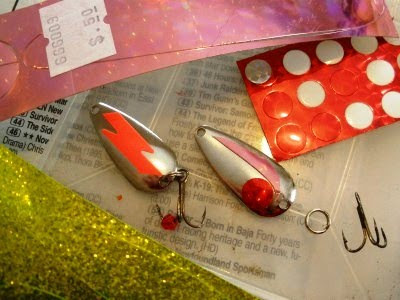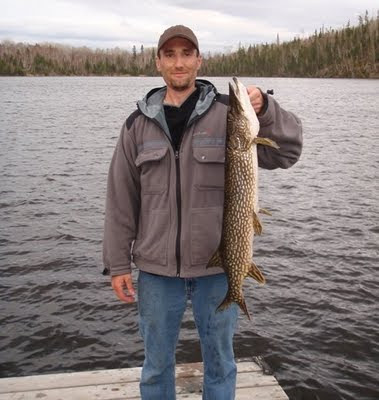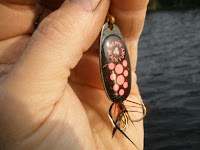
A conservation concept that has really taken hold is the knowledge that there are certain sizes of fish that should be kept and others that should be released.
Bow Narrows angler Paul Stowick holds up a great eating-size walleye in the photo above. It's not too big but has plenty of meat.
In short, big fish should always be released. They are the top breeders and carry the genes for fast growth and large size that we all want to see passed on to other generations of fish. Every time you release a big fish you are helping build a healthy fish population.
In walleyes, it's best to release all fish over 18 inches even though Ontario fishing regulations allow you to keep one that big or larger. I think the intention of the regulations was to allow an angler to keep a trophy for mounting purposes.
However, the truth is the fish replicas that all taxidermists now produce are far superior to a real-skin mount. They look better and they last forever, unlike a natural skin mount.
All the angler needs to do is measure the length and the girth and take a photo. The big fish can then be released.
Still, no one would begrudge an angler for wanting a memento of a once-in-a-lifetime fish and the thrilling fight it put up.
The problem comes from some fishermen who use the one-over 18-inch rule to just keep the heaviest fish possible for eating. This harkens back to the day when anglers proved their prowess with great stringers and coolers full of fish. That day passed away about 20 years ago but a few people haven't heard about it. Today's anglers want great fishing, not the slaughter of as many fish as possible.
Besides it being unhealthy to fish populations to keep big fish, it's also unhealthy to the angler.
Fish bio-accumulate natural and man-made toxins from the environment. The bigger the fish and the longer it has lived, the greater the level of these toxins. This is true for every water body on Earth, from ponds to oceans.
So getting back to walleye, what is the best size to eat?
I would say 14-18 inch walleyes are about ideal. One fish of this size will easily feed one person.
Walleyes smaller than 14 inches just don't have much flesh on them but from a conservation standpoint it would be better to eat two small walleyes than one over 18 inches.
Walleyes reach sexual maturity at 18 inches. So keeping one 18 inches or larger removes one from the breeding population. Keeping smaller fish isn't as detrimental because many of them wouldn't make it to sexual maturity anyway. In Red Lake a lot of them end up as food for giant northern pike and even lake trout.
Walleyes under 18 inches also cook better than large ones; their fillets are thin enough to cook evenly whereas on big fish you need to over-cook the thin portions of a fillet in order to cook the thickest section.
Man, I can almost smell those fillets cooking right now!
Click to go back to our website:
Click to see the latest on the blog:














































